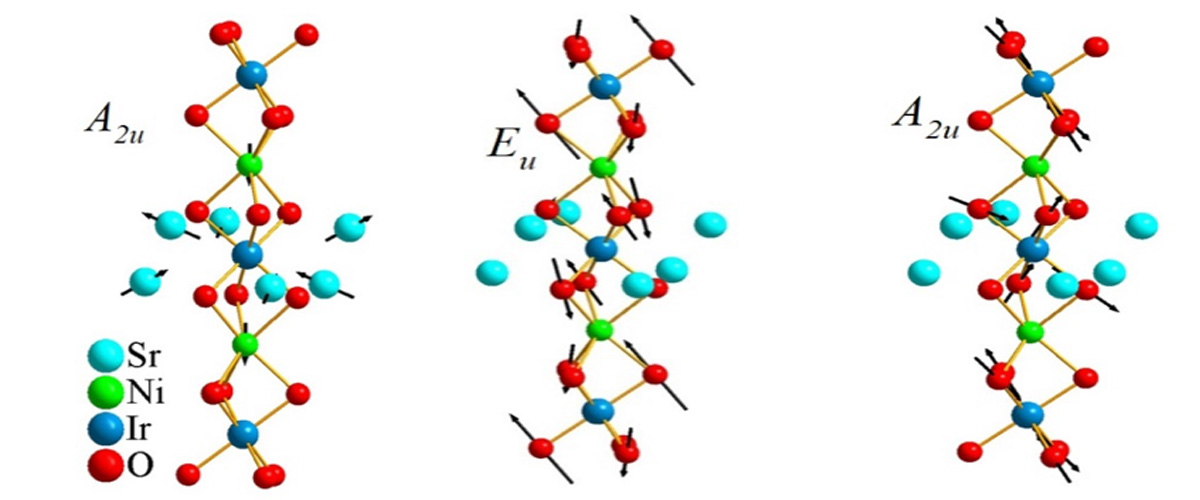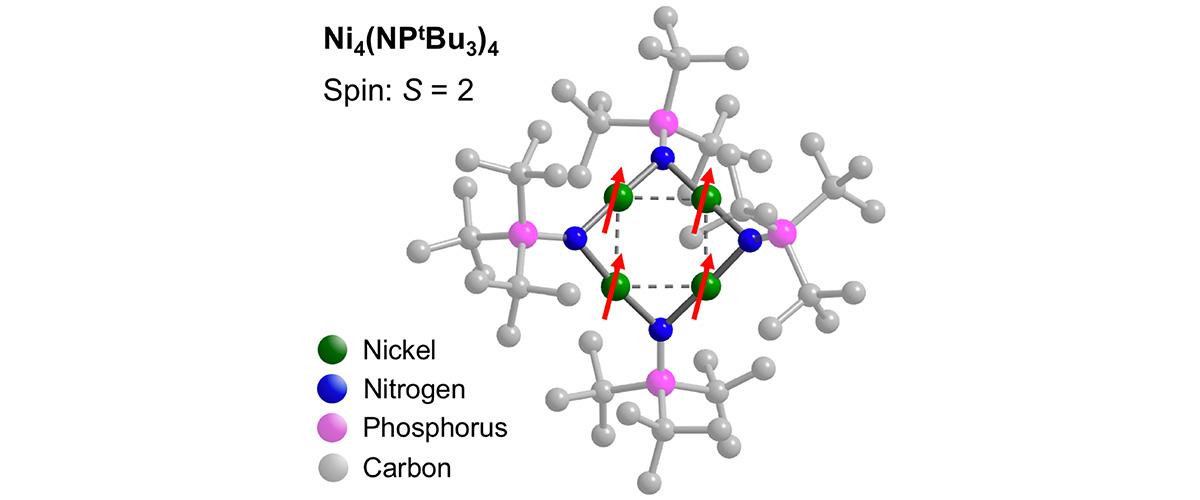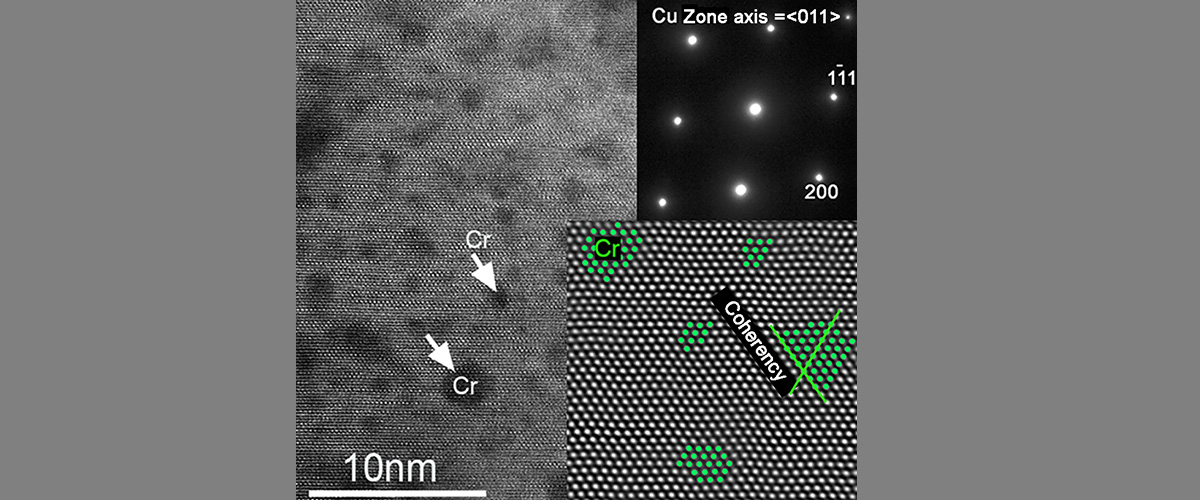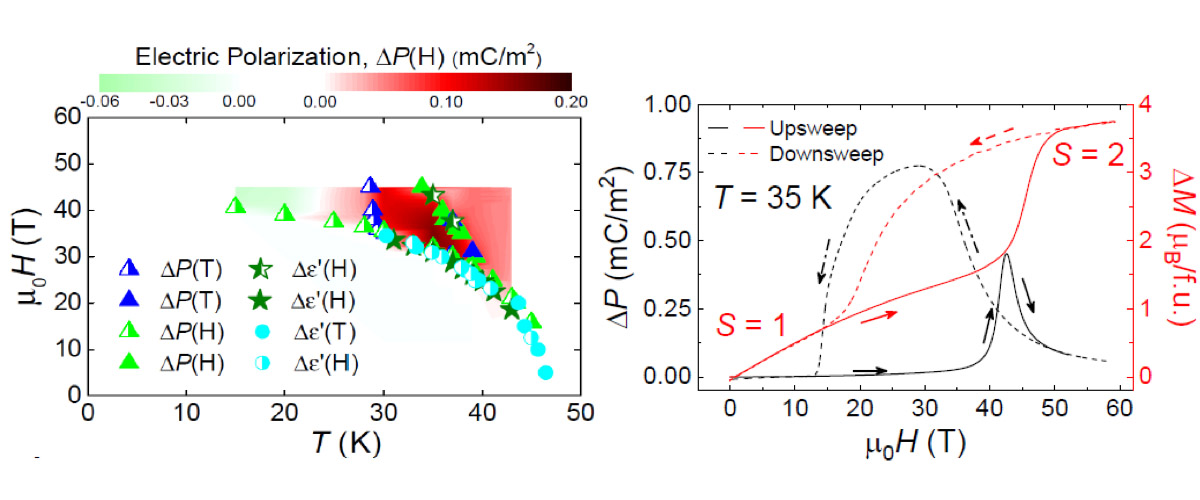What did scientists discover?
Deformations of the crystalline lattice in the material Sr3NiIrO6 in response to a magnetic field result from the creation of magnetic order, which plays a role in pushing the magnetic switching to very high magnetic fields, as high as 55T.
Why is this important?
Materials whose magnetism can be switched by magnetic fields are critical to many applications of magnetism. When a large magnetic moment is switched at high magnetic fields, it is called 'hard magnetism', which is a much sought after technology. Here we explore why the magnetic moment of Sr3NiIrO6 can only be switched at magnetic fields up to 55 T. This is a record high "coercive field" for magnetic switching.
Who did the research?
K.R. O'Neal,1 A. Paul,2 A. al-Wahish,1 K.D. Hughey,1 A.L. Blockmon,1 X. Luo,3, 4, 5 S.-W. Cheong,3, 4, 6 V.S. Zapf,7 C.V. Topping,8 J. Singleton,7 M. Ozerov,9 T. Birol,2 and J. L. Musfeldt1
1University of Tennessee; 2University of Minnesota; 3Pohang University of Science and Technology; 4Pohang Accelerator Laboratory; 5Institute of Solid State Physics; 6Rutgers University; 7national magLab at Los Alamos National Laboratory; 8University of St Andrews; 9National MagLab at Florida State University
Why did they need the MagLab?
The coercive field of Sr3NiIrO6 reaches a maximum of 55T, requiring pulsed magnets to fully access. Measuring infrared spectra takes much longer times to collect, so a 35T resistive magnet was used rather than a pulsed magnet for the infrared spectroscopy. 35 T was required to achieve significant changes due to the high energy scales in this material.
Details for scientists
- View or download the expert-level Science Highlight, Why does magnetic switching occur at such high magnetic fields in Sr3NiIrO6?
- Read the full-length publication, Spin–lattice and electron–phonon coupling in 3d/5d hybrid Sr3NiIrO6, in njp Quantum Materials
Funding
This research was funded by the following grants: J.L. Musfeldt (NSF DMR-1629079, DOE DE-FG02-01ER45885), S.-W. Cheong (NSF DMR-1629059, ICT 2016K1A4A01922028), T. Birol (NSF DMR-1629260), G.S. Boebinger, J Singleton, V.S. Zapf, M. Ozerov (NSF DMR-1157490, NSF DMR-1644779), J. Singleton, V.S. Zapf DOE BES "Science at 100 Tesla"
For more information, contact Vivien Zapf.






